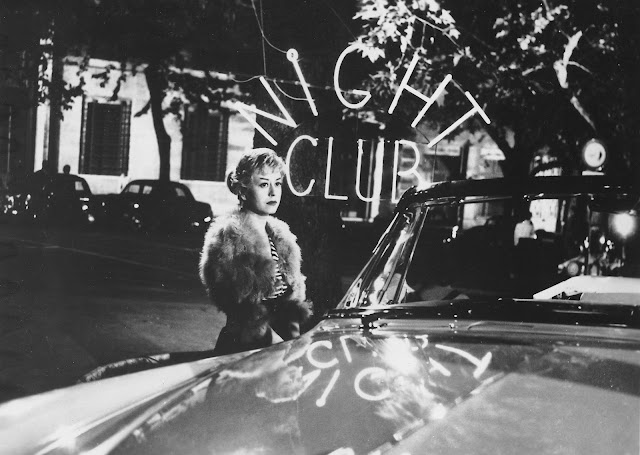By David Elliott
Flix Nosh is a personal movie menu,
served fresh each Friday.
APPETIZER: Reviews of Manchester by the Sea and Why Him?
Manchester by the Sea
I am not in the big hallelujah chorus for Kenneth Lonergan’s Manchester by the Sea. I liked the intricate flow of his You Can Count on Me (2000), with its terrific acting by Mark Ruffalo and Laura Linney, yet never saw his mangled and barely released Margaret (2011). Now the writer-director leads us to Lee Chandler (Casey Affleck), once a local sports star, currently an efficient but morose building superintendent.
Lee
is in emotional stupor after a family tragedy drove away his expressively depressed
wife (Michelle Williams). About as verbal as an earthworm, Lee goes to a tavern
and drinks himself into fights. When his brother dies, Lee becomes the dutiful but
resentful guardian of his snappish teen nephew (Lucas Hedges). The nephew’s mom
(Gretchen Mol) floats in with her nice, placidly Christian catch (Matt
Broderick), an episode that has a slight tingle of David Lynch. Gray New
England weather piles up in sync with Lonergan’s grinding, granular script, which
involves tricky flashbacks.
Affleck’s
performance, for all its sincere integrity, is suffocatingly limited. The remote torpor of the character is like dramatic quicksand. Williams, though under-served by
the script, has a stunning scene of raw desperation as her feelings claw the
cold air. But mostly the film relies on inarticulate, bunkered despair and spiteful
nagging. Not even Ella Fitzgerald’s “I’m Beginning to See the Light” can lift
the mood tonnage, though it might make you yearn for a different movie.
Lonergan
pours Tomasso Albinoni’s famous Adagio over the revelation of Lee’s past
tragedy. The brooding, melancholy piece suited the baroque convolutions of
Orson Welles’s The Trial, but here it
is just a ponderous bolster for obvious family situations. Manchester is a sort of prestige laundromat, where guilty soap
operas go for a final rinse of catharsis. Better we should return to the lacerating
verbiage of Eugene O’Neill’s haunted, boozing, macho-burdened Irish Catholics. This
film puts those elements back in play, but to what gain? Fancy TV drama has bought up
all the rights on this kind of material.
Why Him?
The
modest, clunky appeal of Why Him? is in
the contrast of Bryan Cranston and James Franco. Cranston is “Cheese,” head of
a dying printing biz in Battle Creek, appalled that his bright, pretty daughter
has fallen for Laird (Franco), a Silicon Valley cyber-game genius who is also a
preening idiot. Too bad Laird isn’t Lard, because then we’d have a Cheese &
Lard comedy. Cranston does savvy facial reactions that echo old studio laugh squeezers
like Edgar Buchanan and William Demarest. Franco flaunts his buff, absurdly
tatted body with the supple fluency of James Dean (Franco came to fame as Dean
in a TV movie). Laird is like Dean doing young Jerry Lewis, but stuck in a Seth
Rogen world.
It
has only taken 22 years, but modern comedy has evolved from Jeff Daniels stunningly
trapped with a clogged toilet in Dumb and
Dumber to Cranston taking a high-tech dump in Laird’s mansion without
benefit of toilet paper. Even Franco’s comically versatile charm cannot quite refine
the wit of Laird calling his sweet fiancée “boner bait.” There is nothing beneath
the snarky, slumming surface of crank-ups like this, but we can probably read
the recent election in the duel of the old-tech guy from rusty Michigan
(narrowly for Trump) and a genial edge dope from dynamic California (massively
for Clinton). When Cranston decides to save his company by switching from printing
work to vanguard commodes, it’s a teaching moment: Trump progress! As
bonus, there is a dud cameo by Elon Musk.
SALAD (A List)
The
Best Catholic Family Dramas on Film, by
my light (with director and date): Long
Day’s Journey Into Night (Sidney Lumet, 1962), The Godfather I and II (Francis Coppola, 1972, ’74), The Leopard (Luchino Visconti, 1963), Raging Bull (Martin Scorsese, 1980), Divorce Italian Style (Pietro Germi, 1962),
Catarina in the Big City (Paolo Virzi,
2005), Amarcord (Federico Fellini,
1973), Mafioso (Alberto Lattuada,
2015), Mac (John Turturro, 1992) and Brooklyn (John Crowley, 2015).
WINE (Vin Orsonaire de Chateau Welles)
Youthful
Orson Welles had a romantic taste for lean, strong ballerinas, and for the
cupid powers of Western Union. Courting Vera Zorina, a star dancer and future
wife of George Balanchine, he “ran out of the auditorium between acts of her
Broadway play, sending her telegrams to praise her performance in each act; he
sent her telegrams when he knew she was asleep, wishing her sweet dreams; he
sent her telegrams saying simply I AM ACROSS THE STREET.” How many still remember
the old jolt of telegrams? (From Patrick McGilligan’s delicious Young Orson: The Years of Luck and Genius on
the Path to Citizen Kane.)
ENTRÉE (Starlight Rising)
Walter
Huston won an Oscar (supporting actor) for his prospector Howard in 1948’s The Treasure of the Sierra Madre, and
the moment that probably got it for him is his impromptu dance, a “jig of joy
as ‘gaily vivacious as a water bug’ (James Agee). Lashing out at Dobbs and
Curtin for being ‘dumber than the dumbest jackass’ on finding surface pyrite
(fool’s gold), the old boy breaks into a guffawing dance. He’d learned it from
Eugene O’Neill, and Tommy Lee Jones would offer a fair approximation in The Homesman, 2014.” (From the Humphrey
Bogart/ Treasure of the Sierra Madre
chapter of my book Starlight Rising:
Acting Up in Movies, from Amazon, Nook and Kindle.)
DESSERT (An Image)
A great movie image is more than a still,
it’s a distillation.
Monica
Vitti and Alain Delon live it up in
L’Eclisse / The Eclipse (1962; director Michelangelo Antonioni,
cinematographer Gianni di Venanzo).
For previous Flix Nosh meals, scroll
below.















